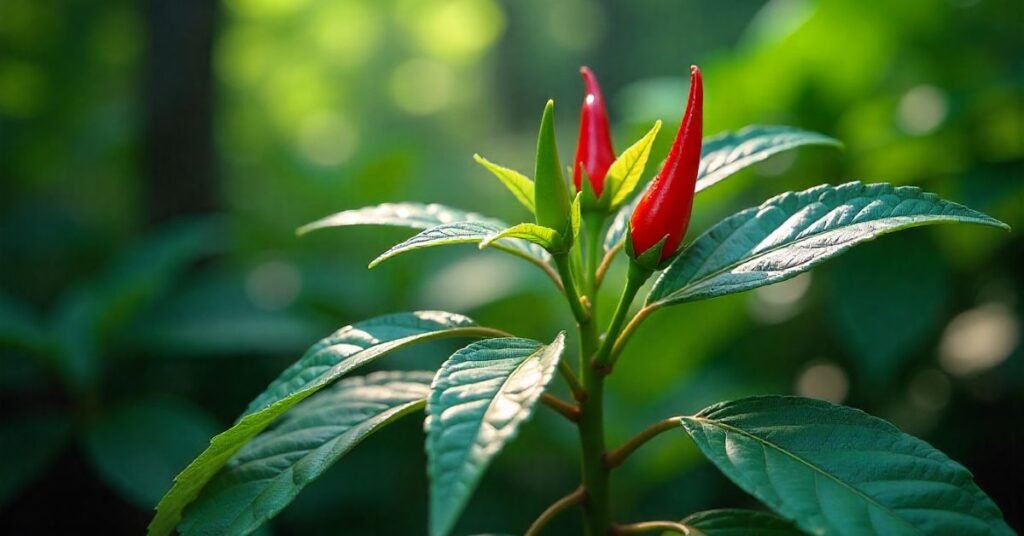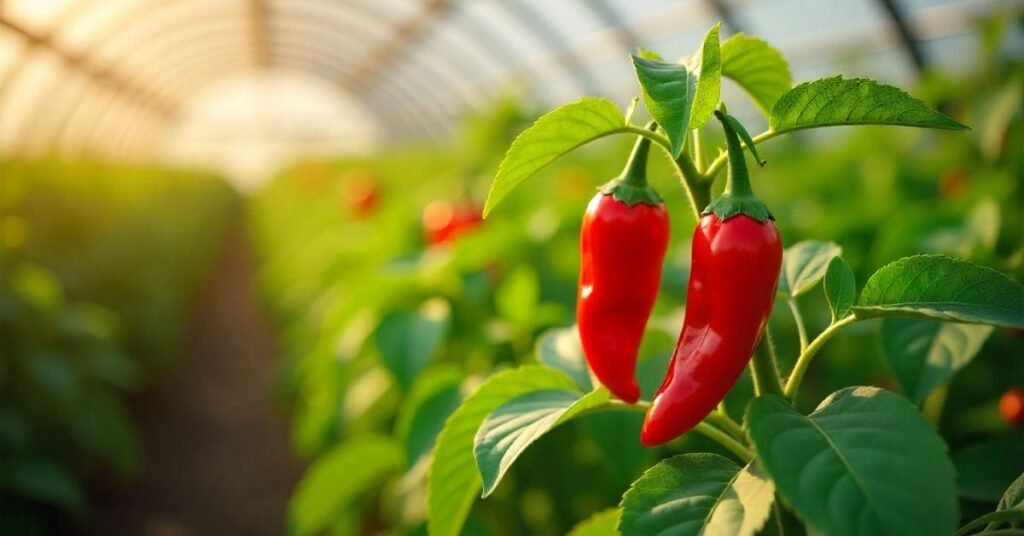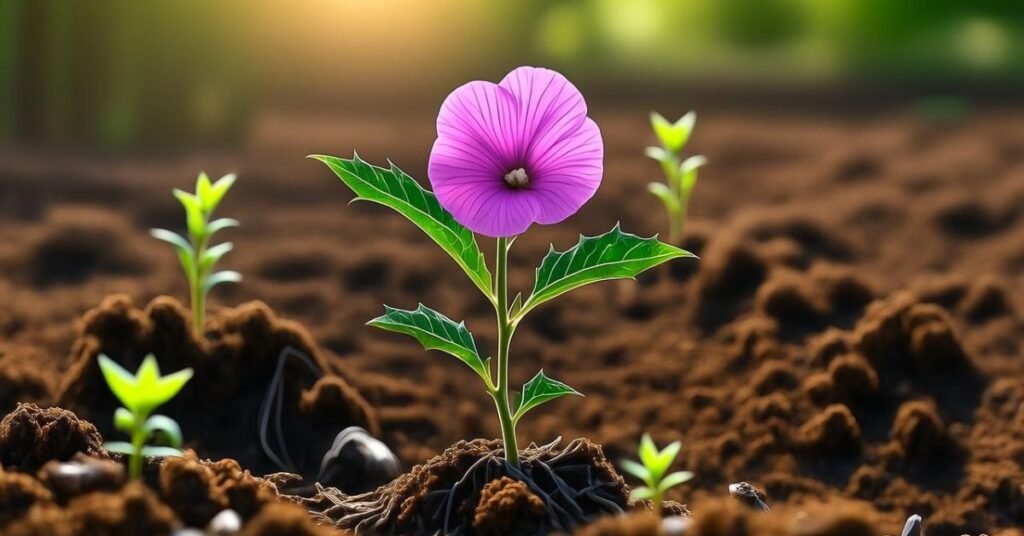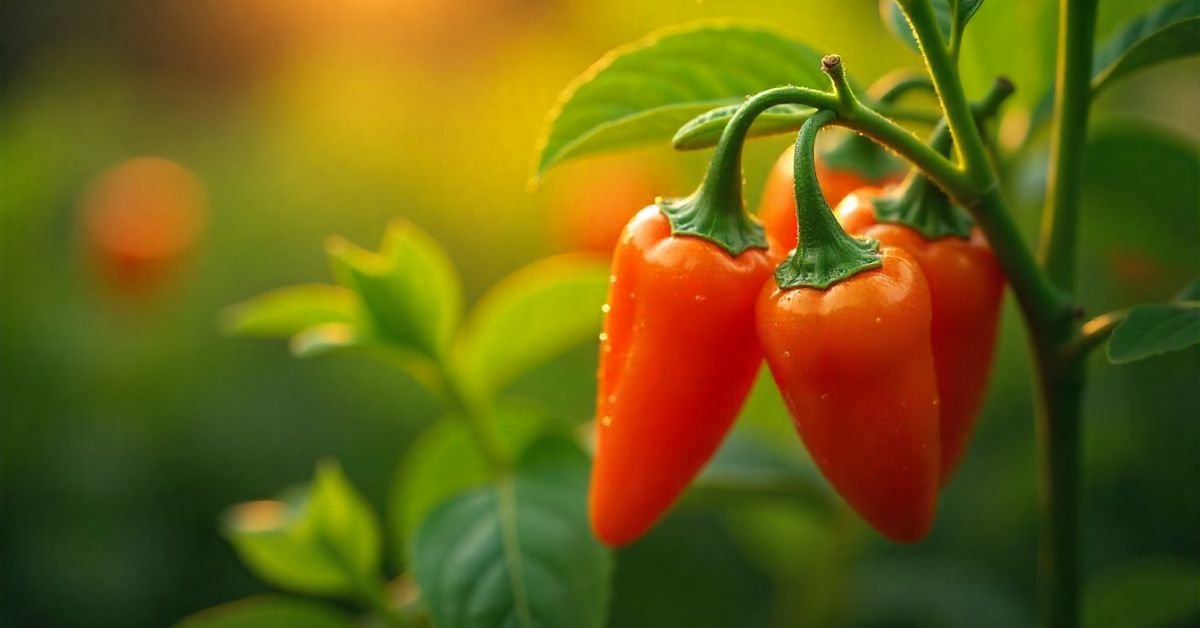Introduction
The Tabasco pepper plant is a type of chili from the species Capsicum frutescens. It grows small upright peppers that change from green to orange and then red when ripe. These peppers are famous for their use in hot sauces, especially the classic Tabasco sauce. The plant has a bushy shape and likes warm, sunny weather. It can be grown in gardens or in large pots on balconies.
Growing a Tabasco pepper plant is simple and exciting. Watching the small green fruits turn bright red feels rewarding. You do not need a large space to enjoy this plant. With a little care, you can harvest dozens of hot peppers in one season. The plant also looks attractive with its colourful fruit, making it both useful and decorative.
To get the best results, start with good soil and full sun. Keep the soil moist but not soggy. Add compost or organic fertilizer to boost growth. Harvest peppers regularly to encourage more fruit. With these easy steps, your Tabasco pepper plant can grow strong and produce a spicy taste.
Ideal Growing Conditions for Tabasco Pepper Plant
The best growth comes when the environment matches what the plant naturally prefers. Tabasco pepper plants like warmth, sun, well drained soil, and consistent moisture. If any of these conditions are weak, the plant grows slowly, produces fewer peppers, or may get diseases.
Light: The plant needs at least 6-8 hours of direct sunlight a day. If daylight is weak, you can use grow lights indoors. In very hot climates, some shade in mid afternoon helps prevent leaf burn.
Temperature: Seeds sprout best when soil or air temperature is warm. Around 70-80°F (21-27°C) is good. Night temperatures should stay above 60°F (about 15-16°C). If nights get too cold, the plant struggles.

Soil: Soil should be fertile, slightly acidic to neutral (pH about 5.5-7.0). It must drain well. Heavy, waterlogged soil causes root rot or similar problems. Adding compost or organic matter helps.
Water: Keep soil evenly moist. Water deeply but avoid waterlogging. Let top soil dry a little before watering again, especially in hot weather. Water at the base of the plant; avoid wetting leaves too much.
How to Grow Tabasco Pepper Plant: From Seed to Harvest
Growing TABASCO PEPPER PLANT involves several stages: starting seeds, transplanting, caring, and harvesting. Here is a guide.
Starting Seeds Indoors
Begin with quality seeds. Sow them about 8-10 weeks before the last frost date in your area. Use pots with drainage, and soil that is loose and fertile. Cover the seed lightly (about ¼ inch) with soil. Keep soil warm (around 80°F / 26-27°C) and moist. Germination usually takes 10-14 days.
When seedlings emerge, give them bright light. Either direct sunlight by a window or artificial grow lights helps. Keep them inside until nights are reliably warm. Harden off (slowly acclimate to outdoors) for about a week or two before planting outside.
Transplanting Outdoors or into Large Pots
After hardening off, transplant outdoors when soil temperature is at least about 60°F (15-16°C). Choose a spot with full sun. Space plants far enough to allow airflow (about 18-24 inches between plants). If using pots, choose large ones with good drainage.Put plants at the same depth they were in their pots. Water well after transplanting. Applying mulch around the base helps keep soil moisture steady and suppress weeds.
Care During Growth
Feed the Tabasco plant with fertilizer low in nitrogen once fruits start forming.
Use a balanced N-P-K fertilizer early in the season.
Later switch to fertilizer higher in phosphorus and potassium to boost fruit.
Prune or remove some lower leaves or branches for better air flow.
Good air flow reduces the risk of disease.
Check the plant often for pests like aphids or other insects.
Watch for signs of disease such as spots, wilting, or fungal growth.
Water carefully at the base and avoid wetting the leaves.
Fruit Development & Harvesting
Tabasco peppers begin as tiny flowers; these turn into green fruit. Over time, fruit changes colour: green → yellow or orange → red. The peppers grow pointing upwards (not hanging down).They usually take about 80 days from germination to full ripeness (red pepper). If you pick earlier (yellow/orange stage), they will be less hot and flavour a bit different.

Harvest by cutting or gently twisting peppers from the plant when they are red and firm. Harvesting regularly encourages more fruit. You can also leave fruit to ripen off the plant if needed, but flavor is best when vine ripened.
Common Problems & Solution
Even with good care, the Tabasco pepper plant can face issues. Knowing what to watch for helps keep plants healthy and productive.
| Problem | Symptoms | Prevention / Remedy |
| Root rot & fungal disease | Yellow leaves, wilting, soggy soil, rotten roots | Use well drained soil, avoid overwatering, avoid waterlogging, good air flow |
| Poor fruit set | Few flowers, flowers drop, low fruit | Maintain warm nights, good light, balanced fertilizer (not too much nitrogen) |
| Pests like aphids, whiteflies, hornworms | Leaves chewed, sticky residue, insects visible | Inspect plants regularly, use insecticidal soap or neem oil, attract beneficial insects |
| Leaf spot or leaf disease | Brown spots, yellow halos, mildew | Avoid wetting foliage, space properly, remove infected leaves, treat early with fungicide if organic/safe |
Size, Yield & Lifespan
The size and yield depend on the environment. In warm, sunny places, a Tabasco pepper plant can grow 4-6 feet (≈1.2-1.8 m) tall. But in cooler climates or in containers, it might stay smaller.Yield depends on how well you care for the plant: good soil, enough sun, proper watering, and nutrients.
If all is right, one plant can produce many peppers over the season. Also, regularly harvesting ripened peppers helps the plant make more.As for lifespan, the plant is perennial in warm climates, but many grow it as an annual where winters are cold. Even where perennial, productivity may reduce after a year or two.
Special Tips for Humid or Hot Climates
If where you live gets very hot, humid, or has heavy rainfall, a few extra measures help the Tabasco pepper plant thrive.
Keep soil moist but not soggy. Use mulch to hold moisture and keep soil temperature more stable. Avoid overhead watering which can promote fungal diseases in humid air. Provide shade during the hottest part of the day if needed.
Ensure good air circulation between plants to reduce humidity buildup around leaves. Prune lower leaves or overcrowded branches. In case of fungal or bacterial disease signs, remove infected parts promptly. Use disease resistant soil, rotate crops yearly if possible.
Uses of Tabasco Pepper Plant
- Fresh red peppers can be chopped into salsa or sauces.
- Green or yellow peppers give a milder heat.
- Red ripe peppers are the hottest and most flavourful.
- You can dry, ferment, or blend them into hot sauces.
- Capsaicin in the pepper boosts metabolism.
- It may reduce inflammation and support the immune system.
- Spicy food should be eaten in moderation.
- Tabasco pepper plants are also decorative.
- Their upright fruit and changing colours look attractive in gardens or containers.
Conclusion
Growing a Tabasco pepper plant is simple and rewarding. The plant gives bright, spicy peppers that you can use fresh or in sauces. It also adds colour and charm to your garden or balcony. With good soil, sunlight, and regular care, the plant stays healthy and produces many peppers. Anyone who loves fresh heat in their food can enjoy growing this vibrant plant at home.
FAQs
Q1. How long does a Tabasco pepper plant take to grow?
It takes about 80 days from germination for peppers to turn fully red and ready for harvest.
Q2. Can I grow a Tabasco pepper plant in pots?
Yes. Use a large pot with good drainage and place it in full sun for best growth.
Q3. How spicy are Tabasco peppers?
They range from about 30,000 to 50,000 Scoville Heat Units, making them moderately hot.
Q4. How often should I water my Tabasco pepper plant?
Keep soil evenly moist but not soggy. Water at the base when the top soil feels dry.
Q5. Do Tabasco pepper plants need pruning?
Yes. Removing lower leaves or crowded branches improves airflow and reduces disease risk.


